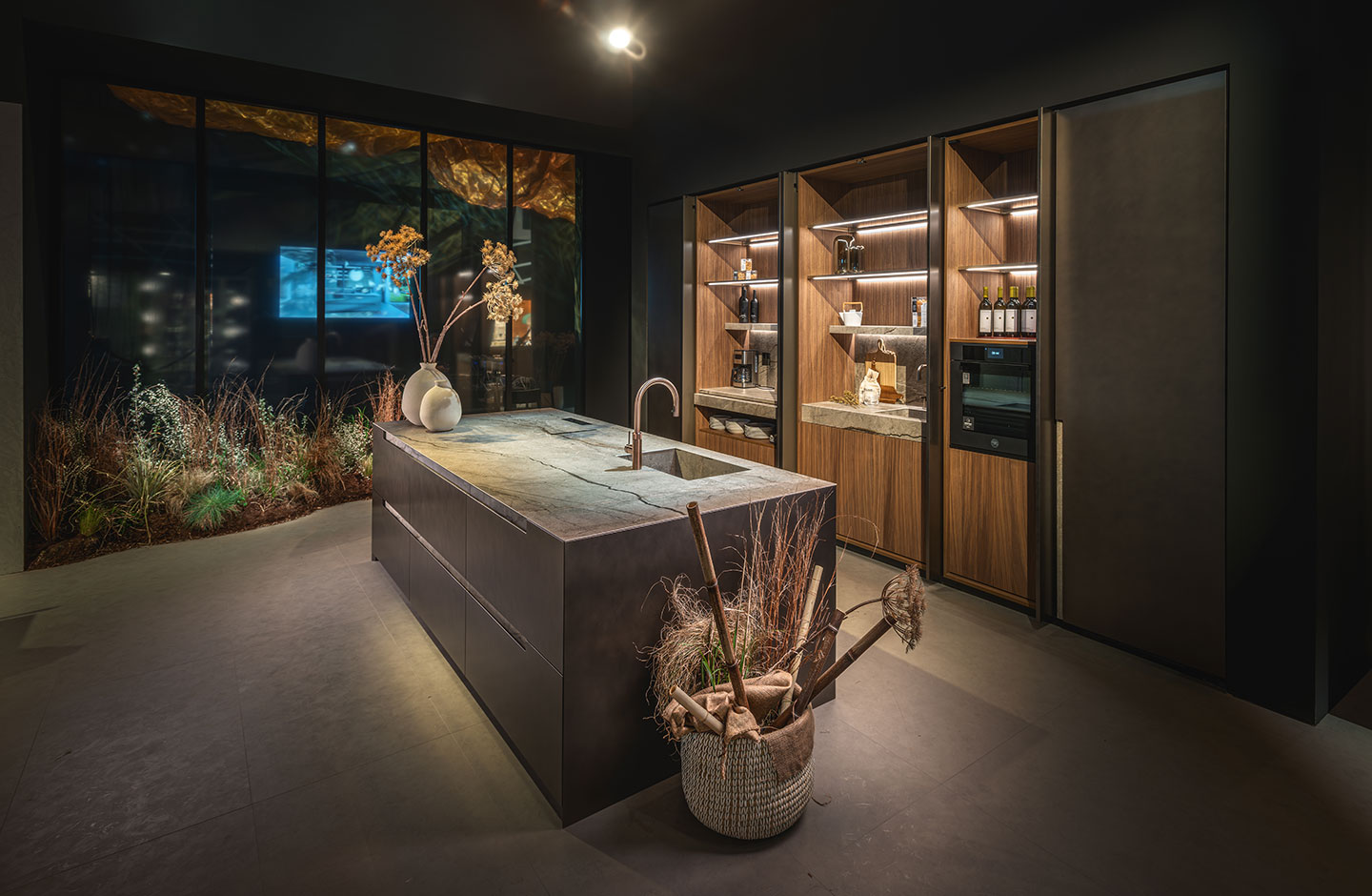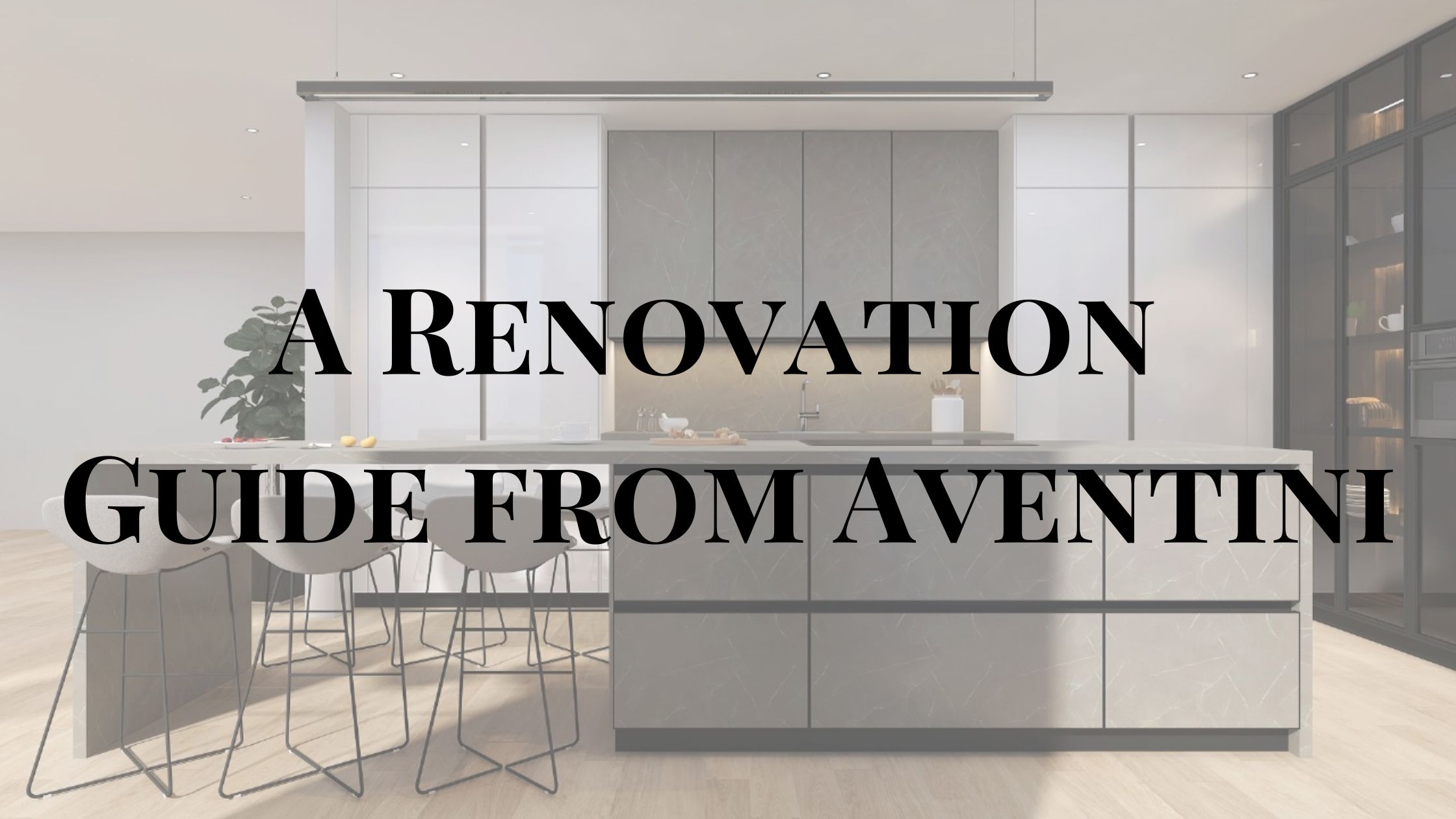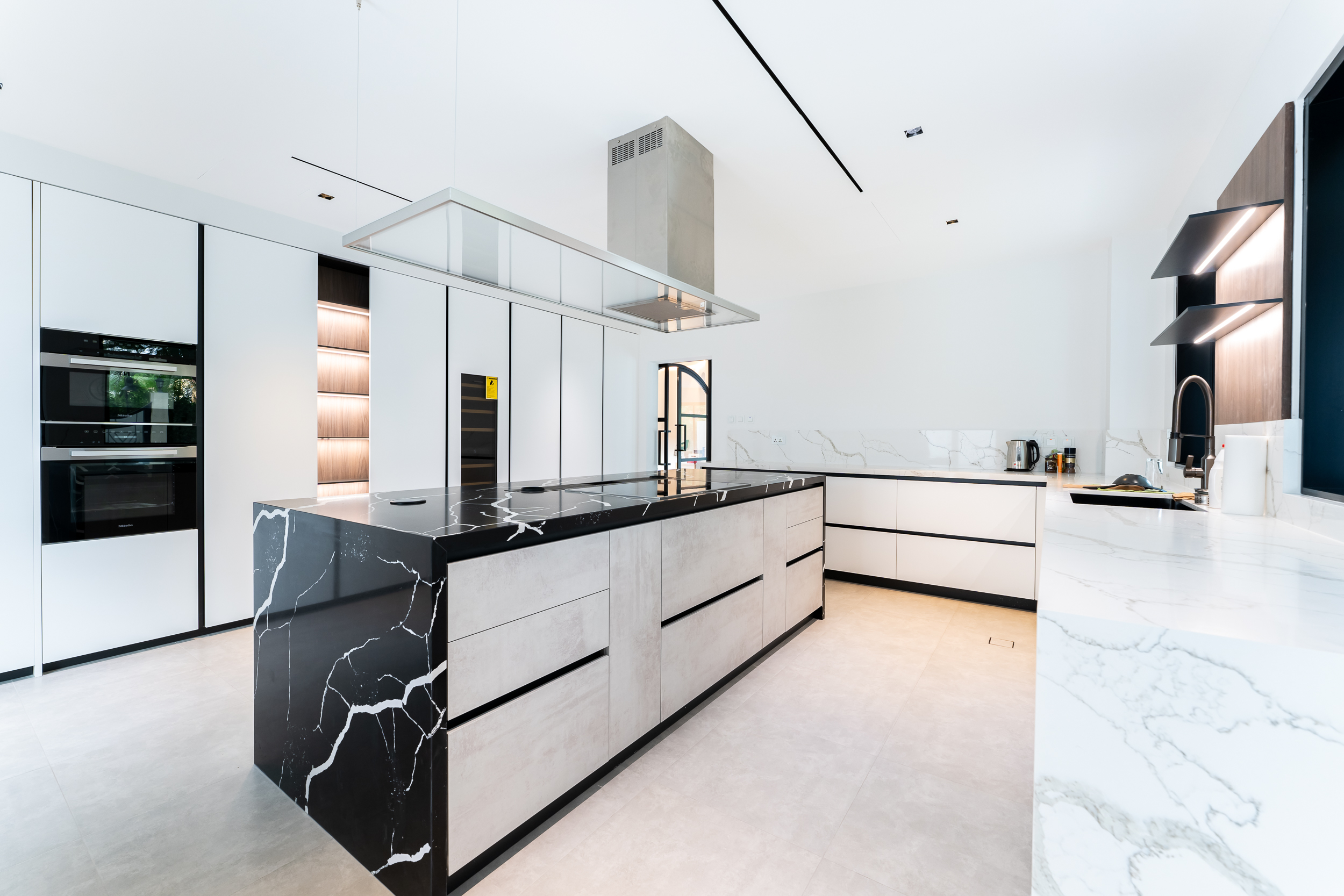What are the best kitchen ideas for 2022?
The best kitchen ideas for 2022 have come about as a direct result of the pandemic.
No longer simply a place to cook, our demands on our kitchens to be exceptional living spaces have pushed boundaries to create all kinds of exciting possibilities.
Now firmly established as a flexible living space, cooking is just one of many activities that happens in the kitchen, and the latest approach to this essential space reflects a growing need and desire for flexibility.
Once, design was all about function and ergonomics, then came the entertaining kitchen, and now the ‘living kitchen’ which can encompass a home office, media centre and relaxed lounge-style seating as well as semi-professional cooking arena.
Moving away from sleek white, boxy cabinetry, there is a return to more classic styles with painted finishes offering a softer finish and the option to choose from a larger palette of shades and, indeed, to use two or three in one kitchen. But it is texture that is really bringing the space to life. Grain, concrete, heavy relief patterned doors, textured stone – these tactile surfaces have a presence, they interact well with light, and offer all kinds of exciting design possibilities.
The kitchen now looks like a living space. Cabinetry is sleeker, handless, in subtle finishes that wouldn’t look out of place in the living room. Freestanding pieces are mixed in with fitted units, and modern-day islands stand on tall legs looking like elegant tables as opposed to functional work benches.
There is a definite move towards being more creative with décor. Statement lighting – notably large pendants draw the eye and help define the zones, while wall art adds character and expresses personality.
Appliances have become super smart but also know when to disappear. The new finishes of matt black, white glass and soft grey for ovens are designed to blend with new cabinet finishes. Integrated extraction set into the ceiling or down draught options that slide demurely into the work surface when not in use allow for uninterrupted views. Even sinks now have covers to make the use of every inch of work surface and to help them blend, or are formed from the same composite material as the worktop such as Corian and Silestone to give a seamless finish.
- WHICH KITCHEN IDEAS SHOULD BE AVOIDED?
The kitchen ideas to avoid are those which quickly date the room. Ideally, a kitchen might only be replaced once every 10 years, so any design fads that may appeal to you now should be carefully assessed to see whether you might still love them in five years’ time – and, if you might sell your home any time within that first five years, you might like to consider whether those kitchen ideas are likely to be off-putting to future homebuyers.
Other kitchen ideas to avoid are those that don’t match up to your property – a very contemporary kitchen in an otherwise traditional home can be a glaring mistake, while one that is constructed in low-budget materials in an expensive or well-curated home will stick out like a sore thumb.
- WHAT IS A GOOD THEME FOR A KITCHEN?
So, you’ve got your color sorted, but what is a good theme for a kitchen?
Here’s a breakdown of some of the most popular choices, including modern, classic, country and modern rustic…
- Modern kitchens
The mainstay of modern kitchen design is simple flat-fronted cabinets – it’s a sleek look and one that is ageing incredibly well. In fact, much of what we consider to be modern design dates back to the 1930s. Even the sleek, handleless cabinets so typical of modern kitchen design right now have been around since the 1960s when SieMatic launched the first finger-pull kitchen cabinet, and the notion of open-plan kitchen-living is almost as old.
‘The modern style of kitchen developed out of the 1980s trend for loft or warehouse living, and that has extended into the open-plan living that is now so popular,’ says Keith Atkins, Director of Design at Design Space London.
For a while, modern kitchens seemed to take stark to a whole new level. Cabinetry was pared down and invariably white gloss, but it’s a look that can be too clinical for many. Thankfully, the current trend for modern is a far warmer affair. The clean lines and a fuss-free finish are still there but with texture, surface finish and soft color that bring character and are easy to live with.
Bernard Otulakowski, Managing Director, of SieMatic(opens in new tab) UK points out the design potential in the new modern. ‘The key is to use sleek handleless cabinets and a rich and authentic combination of materials and textures to create a really interesting and elegant scheme. Hidden storage will keep the kitchen clutter free, but include enough open areas to put special items on display,’ he advises.
‘Modern style has become more eclectic, more professional, sometimes more glamorous,’ says Graham Barnard, MD Matrix Kitchens(opens in new tab). ‘There’s a trend away from sterile minimalism and a distinct move towards warmth, often with a hint of steel.’
- Traditional kitchens
Kitchen trends might be ever-changing but more often than not, it’s a blend of styles that hits the right note – elegant proportions combined with modern practicality. The classic kitchen, with its timeless lines and broad appeal, can tick all these boxes, narrowing the gap between traditional furniture and contemporary design to suit your home.
‘While the architecture of the cabinetry may pay homage to a particular era, the equipment can be state of the art and tailored to your lifestyle,’ explains Jane Stewart, Design Director at Mowlem & Co.
‘For example, you can house banks of refrigeration and wine storage in a corniced, fully framed run of furniture. Materials should be of the finest quality but the look can be updated by details, be it stains, color, reflective finishes, distinctive handles, lighting, pop up sockets, boiling water taps or unusual bespoke elements.’
Part of the classic kitchen’s popularity lies in its useful features. Dressers, full- height larder cupboards, deep ceramic sinks, hanging rails and island units aren’t just decorative elements – they’re also hugely practical, while simple cornicing and mantles are a natural home for LED lighting and hidden storage respectively.
- Country kitchens
Warm and inviting, the country kitchen has always been known as a comfortable and friendly space, without the formality or urban edginess of the city. The goal, says Mark Wilkinson, Founder of Mark Wilkinson Furniture(opens in new tab), is to create a room ‘that puts its arms around you, allows you to dump your muddy wellies, and not sulk that you are spoiling its ‘look’.’
And the latest designs revel in the relaxed mood of the country, without being in any way twee. ‘The look has become simpler and cleaner,’ says Graham Jones, designer at John Lewis of Hungerford. ‘Not as fussy as of old, the new country kitchen has clean lines without being stark, providing traditional warmth with a mix of modern materials and touches.’
Classic framed, Shaker-style cabinetry with a painted finish remains a popular choice because it tends to create a softer, warmer look than glossy, sharp-edged designs.
Details, such as overmantels and cornices, feature less embellishment, while the paint palette is cool and simple: modern neutrals, particularly grey, are used to create a gentle look, or stronger shades, such as deep navy or charcoal, can be used to add modern punch.
And we are also seeing more flat-fronted cabinets in lighter timbers being used to add the warmth and natural beauty of wood to clean- lined design.
- Cottage kitchens
Pretty, decorative, and often space-challenged, cottage kitchens are all about clever spaces solutions and attention to pattern, texture and layering.
Traditional cottage kitchens in period homes are prized for their original features – whether stone floors or ceiling beams – it’s these details that give cottage kitchens their unique charm and homely feel.
However, you can recreate a cottage kitchen in a contemporary home – although this style looks best if kept to small homes with low ceilings.
- Modern rustic kitchens
After decades of being counselled on the benefits of sticking to safe, neutral design when renovating, today’s modern rustic kitchen trend is a breath of fresh air.
The look sits somewhere between classic country and urban contemporary, uniquely blending the best of both, with the nod to industrial design providing a sharp edge.
The modern rustic look involves a careful balancing act of materials, design styles and colors. Achieving a clean but eclectic look that appears effortless, not contrived, requires skill but there are a few simple design tricks that will help.
First, keep control of the number of different finishes and materials – too many may result in chaos; too few will prove bland. No more than three core materials, with perhaps one or two accent finishes, should suffice. Think plain painted cabinets, with concrete or wooden worktops and stone floors, plus smaller doses of stainless steel, copper or brass.
Next, introduce interest and shape using standalone pieces – a vintage lamp, heirloom chair or well-worn butcher’s block, for example.
Finally, consider texture. Tactile finishes, such as upholstered bench seats, rough-sawn timber doors or worktops, and encaustic tiles will all help soften the hard surfaces in a modern kitchen.




